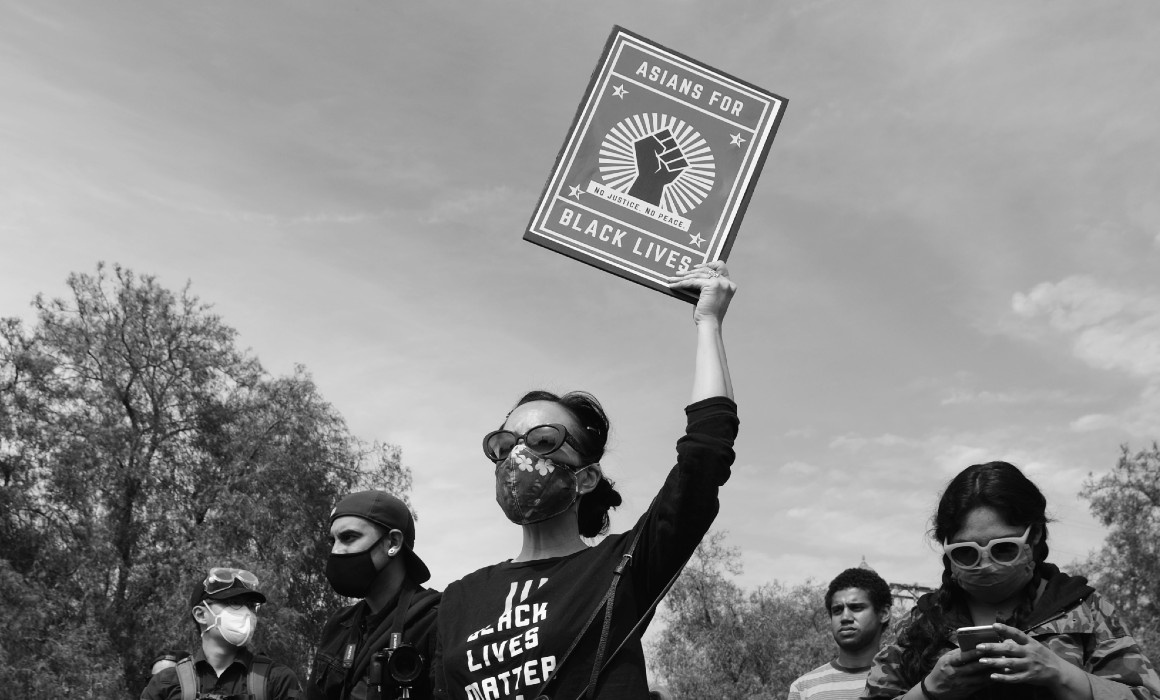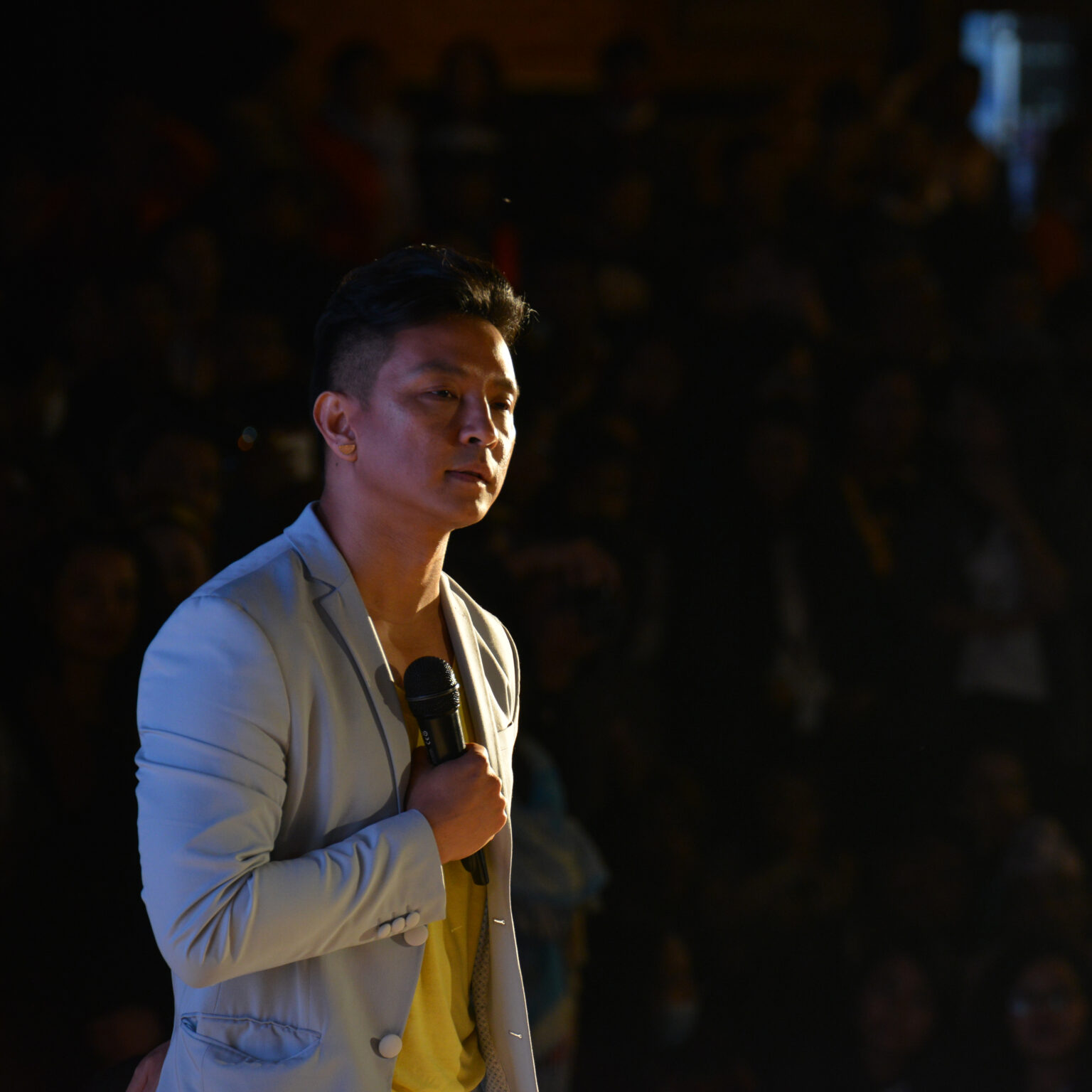As protests continue around the world to demand justice for George Floyd, Breonna Taylor, and other members of the Black community who have lost their lives to police brutality, many Asian Canadians and Asian Americans are voicing their outrage and calling out anti-Blackness within the Asian community.
Several advocates are emphasizing that staying silent or not taking action when it comes to race only benefits the system of white supremacy.
This very action was on full display when Tou Thao, an Asian American officer, stood by idly while officer Derek Chauvin pressed his knee into the neck of Floyd, a 46-year-old Black man. Floyd struggled to breathe, fell unconscious and died shortly after. As Vice notes, Thao’s idleness has become the “symbol of the tangible consequence of inaction, and tendency of the Asian community to turn a blind eye when it comes to matters of race.”
NBC Asian America reports that several experts say now is a pivotal moment for Asian Americans to tackle anti-Blackness, and they’re right. Yes, the Asian community has experienced heinous hate crimes in the past few months amid the coronavirus pandemic, but as Leena Yin, Asian Pacific American Medical Student Association (APAMSA) Advocacy director notes, not a single one of the victims was killed.
“That our community can even be surprised or shocked by this wave of racism and xenophobia demonstrates it isn’t our normal, that it’s very clearly related to the virus,” she writes. “But black people deal with this all day, everyday, 365 days of the year, pandemic or not. (And they still get bonus racism with pandemics! Hate incidents against African immigrants went up during the Ebola outbreak.)”
So how can we, the Asian community, support Black lives in a productive way? As the experts say, we must first tackle our anti-Blackness, and start by recognizing our own privilege, unpacking the biases in our communities and confronting the historical context behind it. So let’s get into it, shall we?

First, a little history lesson on tensions between Asian and Black communities…
There is a long history of tensions between Asian American and Black communities. In the 1990s, there were divisions between Korean business owners and their Black customers in the States, which was further exacerbated in 1991 when Korean-American liquor store owner, Soon Ja Du, shot Latasha Harlins, a 15-year-old Black girl, in the back of the head, thinking she was shoplifting orange juice. Though Du was found guilty of manslaughter, she was merely sentenced to five years probation, 400 hours of community service, funeral restitution, a $500 fine, and never served any jail time.
Nearly one year later, the acquittal of an LAPD officer who was caught on camera brutally beating Rodney King, a Black man, sparked the 1992 Los Angeles riots, in which several Korean-American-owned stores were damaged as a result of looting and arson, further heightening the existing Black-Asian tensions in the area.
Then, in 2014, Chinese-American NYPD police officer Peter Liang shot and killed Akai Gurley, a Black man, in a dark stairwell in a Brooklyn housing project. Liang avoided a prison sentence and was ordered to serve probation and community service. The incident created a divided reaction, with mostly Black people wanting justice for Gurley, while many Chinese Americans advocated on behalf on Liang, describing him as a scapegoat by prosecutors.
… which, in part, comes from the ‘model minority’ myth
This divide between the two communities stems, in part, from being set in opposition to each other throughout American history. When Asians first arrived in the United States and Canada, they were depicted as threats — the “yellow peril” that would jeopardize Western freedom and independence. In Canada, specifically, the Electoral Franchise Act of 1885 explicitly denied Chinese-Canadians the right to vote, and Chinese-Canadians were also not allowed to practice in professions such as law and medicine, and were subject to a head tax, a fee charged to each Chinese immigrant entering Canada. (TL;DR: We weren’t welcome in North America).
However, by the 1950s, the “model minority” myth was born, and Asian Americans were being glorified as “industrious, law-abiding citizens who kept their heads down and never complained.” This narrative was used to “drive a wedge” between Asian American and Black communities in that it promoted the idea that non-white Americans could succeed and overcome racism by striving for success. And by directly juxtaposing Black stereotypes, Asian Americans distanced themselves from the struggles of Black people and positioned themselves in closer proximity to whiteness.

…leading us to perpetuate anti-Blackness in our everyday lives
In a Medium article, activist and CEO of Awaken, Michelle Kim, writes, “In our quest to survive, some of us may have been striving to become White-adjacent… and along the journey, consciously or subconsciously, have adopted the language and beliefs of White Supremacy and anti-Blackness.”
In order for us to truly show up for the Black community and be anti-racist (not, non-racist), we need to notice how we perpetuate anti-Blackness in our everyday lives — whether that be through cultural appropriation, staying silent when our parents or family members make racist remarks at the dinner table, or using and promoting skin “whitening” products (Kim outlines 30 ways Asians perpetuate anti-Black racism everyday here).
It’s important to note: recognizing our anti-Blackness and our privilege does not dismiss or invalidate the injustices or racism we have experienced throughout our lives. It means that we can see the injustices the Black community is facing and understand that the racism we face is not the same.
Bottom line: There’s power in solidarity
Yin said it best: “A world that doesn’t value Black lives doesn’t value the life of anyone who’s not white.”
She continues, “The pain we’re feeling right now must bind us tighter together in solidarity with others who experience pain and fear from the same place, [or] else we are all left vulnerable to this system that sees anyone nonwhite as disposable.”
And when Asians rally in solidarity with the Black community, great change can happen. One example is the Third World Liberation Front, which was formed in 1968 by the Black Student Union and other ethnic student groups at San Francisco State University (including Asians) to demand change in admission practices. The group went on months-long strike (the longest student strike in U.S. history) to demand a curriculum that reflected their histories and identities, among other demands. Though there were several beatings and arrests of students of colour, eventually the establishment of an ethnic studies department was formed.
As Lillian Weng notes, we must also remember Asian-Black solidarity in the ’60s and ’70s, like when Yuri Kochiyama cradled the dying Malcolm X in her arms, and the Asian American Political Alliance standing in support of the jailed Black Panther party leader, Huey P. Newton. Additionally, the Black Panther Party’s militant activism paved the way for AAPI activists such as Yuri Kochiyama, Fred Ho, and the Red Guard Party.
And when the Asian community called for solidarity against coronavirus racism, Black leaders showed up. It is now our responsibility to do the same, and continue the work in the quest for equality. In addition to dismantling and unlearning our own anti-Blackness, we also must actively educate ourselves, our loved ones and other members of the community, call out racism when we see or hear it, listen to the Black voices, and continue to show up for the Black community.
One thing to remember: as Kim says, “educating yourself and others about anti-racism and anti-Black racism is an ongoing journey and a life-long commitment… So don’t give up, don’t burn out, and learn to manage your overwhelm.”









